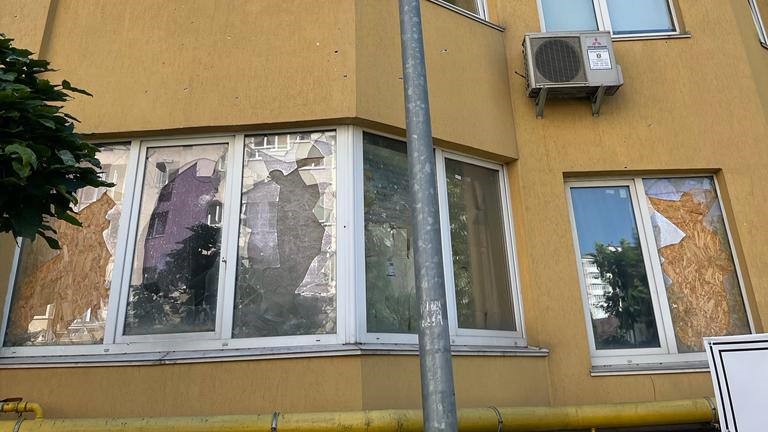Destruction of infrastructure in Ukraine
The destruction of (critical) infrastructure has steadily increased since the Russian invasion in February 2022. As a result of the acts of war, private houses, apartments or publicly accessible infrastructure such as shopping centers, bridges or roads are (un)intentionally damaged time and again. The destruction of the Kakhovka dam near Kherson is a tragic example of the disabling of critical infrastructure.
Much of the destruction and damage to infrastructure takes place near the fronts in the east and southeast of the country. However, areas away from the war zones are also repeatedly hit; in Kiev, for example, missiles struck in June. Russian attacks not only kill people and animals directly, but also damage the respective infrastructure. Moreover, reconstruction is costly and regional authorities cannot always cover all the damage, which is why people are also dependent on aid.
The Kyiv School of Economics calculated that by April 2023, the total amount of direct, documented damage inflicted on Ukrainian infrastructure by the Russian invasion would be $147.5 billion. In the meantime, this amount needs to be raised – and will continue to be raised – in the future. While about one-third of this amount is due to damage to or destruction of homes ($54.4 billion), damage to infrastructure is estimated at one-quarter (about $36.2 billion).
The fact that the destruction of infrastructure can also develop into a global catastrophe in the worst case is illustrated by the attacks on ports along the Danube in southeastern Ukraine. Since August, numerous Russian drone attacks have repeatedly damaged or destroyed the infrastructure of the ports, as it is at these infrastructures that wheat is loaded, which is used for export. The destruction of the wheat has not only resulted in negative losses for Ukraine’s economy, but also poses further challenges for the recipient states.
Green Cross Switzerland’s contribution for the renewed repair of infrastructure.
The destruction of (critical) infrastructure in Ukraine is also a key issue for Green Cross Switzerland. In its work in Ukraine, the foundation focuses on the repair of infrastructure and the delivery of items for everyday life, in addition to the delivery of systems for the purification of drinking water and humanitarian goods. In the spring, a boat engine was provided to the rescuers of the Novhorod-Siverskyj State Service for Emergency Situations. The technical infrastructure helped rescue victims of the floods in the northeast of the country. During the summer, more than 200 children in the Kherson and Mikolayiv regions also received backpacks for everyday school life, and destroyed windows were financed with the support of Green Cross Switzerland. Further assistance is being planned at this time.
The reconstruction of the infrastructures in Ukraine will take several years. Therefore, Green Cross Switzerland has set itself the goal to also help with the reconstruction in the future.
Learn more about the topic here:

